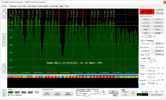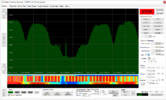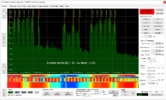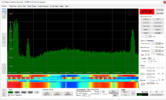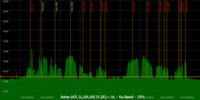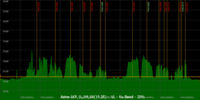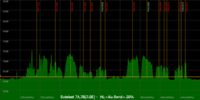Hi,
"
@vma
With the spectrum analyzers, you can read a tp and if it has the correct information, it identifies the
network/RED (satelite) where you are.
I do not know if the program can do the same thing, upload a sample photo."
This function uses the NIT (Network identification Table" to identify the satellite. This has the following problems:
1) Many satellite transponders do not carry NIT information (transponder used for feeds, data, provider, etc.) or have wrong NIT information (transponder that are distributed from one site to the other: uploaded to Astra and then retransmitted through Hispasat - the provider doesn't remux a new NIT). In these cases, the field meter does not show the satellite name or it shows the wrong satellite name.
2) In order to evaluate the NIT, the field meter has to first lock the signal. This requires perfect aligment of the dish. My method works with badly aligned dish, when the signal cannot be locked, but the transponders can already be identified as such.
3) The NIT table is carried within the TS (transport stream), but after a successfull signal lock, it takes quite some time for the NIT to be received. It can take up to half a minute (normaly around 10-20 seconds, which is a lot).
My software will never support that, because the SMA device is just the equivalent of a sweeped spectrum analyser. It does not have a tuner and as such cannot demodulate any analogue or digital signal!
I recommend the following setup for Satellite DX:
1) Crazyscan compatible SAT card.
2) SMA Device
3) LNB -> splitter like the Global Communications Split 4AF -(1)-> SAT Card -(2)-> DC Blocker (not needed with the 4AF but better be safe than sorrow) -> SMA device
This way you can always see the live spectrum with my software, do measurements, satellite identification without signal lock, etc.
Use EBSpro (discontinued?) or CrazyScan for blind scan, constellation diagram (CrazyScan) and picture (through VLC and/or TS Reader).
Regards,
Vitor

